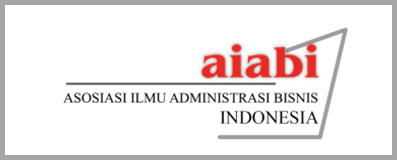Jakarta Islamic Index Stock Volatility and Forecasting Using Realized GARCH Model
DOI:
https://doi.org/10.31334/bijak.v18i1.1228Keywords:
Garch, Volatility, Jakarta Islamic Index, Return, Stock.Abstract
Along with the large number of investors transacting on Islamic stocks, stock prices' movement becomes more volatile. The purpose of this research is to examine the behavior of volatility patterns in shares incorporated in the Jakarta Islamic Index using the Generalized Autoregressive Conditional Heteroskedasticity (GARCH) model. This study uses daily data from six stocks in the Jakarta Islamic Index during the period of January 1, 2009, to December 31, 2019. Data volatility is seen using the GARCH model. Estimation results for daily data show that the volatility of ASII, SMGR, TLKM, UNTR, and UNVR shares is influenced by the previous day's error and return volatility. This is indicated by the GARCH effect on each regression result. The study results are beneficial for an investor, and invest with a low level of risk can choose TLKM shares. Nevertheless, if going to get a high level of return can invest in UNTR shares. For securities, analysis can use the GARCH model tested to predict volatility in the Jakarta Islamic Index.References
Abdulkarim, F., Akinlaso, M., Hamid, B. A., & Ali, H. (2020). The Nexus between Oil Price and Islamic Stock Markets in Africa: A Wavelet and Multivariate-Garch Approach. Borsa Istanbul Review, 20(2), 108–120. https://doi.org/10.1016/j.bir.2019.11.001
Abdullah, S. (2015). The Objectives of Takaful and Shariah: Towards the Achievement of Maqasid Shariah. Journal of Human Capital Development, 8(1), 93–104.
Abraham, F., Cortina, J. J., & Schmukler, S. L. (2021). The Rise of Domestic Capital Markets for Corporate Financing: Lessons from East Asia. Journal of Banking and Finance, 122, 1–64. https://doi.org/10.1016/j.jbankfin.2020.105987
Atkins, A., Niranjan, M., & Gerding, E. (2018). Financial News Predicts Stock Market Volatility Better than Close Price. The Journal of Finance and Data Science, 4(2), 120–137.
Audrino, F., Sigrist, F., & Ballinari, D. (2020). The Impact of Sentiment and Attention Measures on Stock Market Volatility. International Journal of Forecasting, 36(2), 334–357. https://doi.org/10.1016/j.ijforecast.2019.05.010
Babu, N., & Reddy, E. (2015). Prediction of Selected Indian Stock Using a Partitioning–Interpolation Based ARIMA–GARCH Model. Applied Computing and Informatics, 11(2), 130–143. https://doi.org/10.1016/j.aci.2014.09.002
Bertasiute, A., Massaro, D., & Weber, M. (2020). The Behavioral Economics of Currency Unions: Economic Integration and Monetary Policy. Journal of Economic Dynamics and Control, 112, 1–19. https://doi.org/10.1016/j.jedc.2020.103850
Birău, R., & Trivedi, J. (2015). Estimating Long-term Volatility on National Stock Exchange of India. Procedia Economics and Finance, 32(15), 574–579. https://doi.org/10.1016/s2212-5671(15)01434-3
Boako, G., Agyemang-Badu, A., & Frimpong, J. M. (2015). Volatility Dynamics In Equity Returns : A Multi-GARCH Approach. European Journal of Business and Innovation Research2, 3(4), 36–45. https://doi.org/10.1017/CBO9781107415324.004
Bodie, Z., Kane, A., & Marcus, A. (2008). Essential Of Investments 7th Edition. New York: The McGraw-Hill.
Boukhatem, J., & Moussa, F. Ben. (2018). The Effect of Islamic Banks on GDP Growth: Some Evidence from Selected MENA Countries. Borsa Istanbul Review, 18(3), 231–247. https://doi.org/10.1016/j.bir.2017.11.004
Box, G. E. P., Jenkins, G. M., Reinsel, G. C., & Ljung, G. M. (2015). Time Series Analysis Forecasting and Control. New Jersey: John Wiley & Sons, Inc.
Byström, H. (2014). The Impact of Currency Movements on Asset Value Correlations. Journal of International Financial Markets, Institutions and Money, 31(1), 178–186. https://doi.org/10.1016/j.intfin.2014.03.014
Chandrinos, S., & Lagaros, N. (2018). Construction of Currency Portfolios by Means of an Optimized Investment Strategy. Operations Research Perspectives, 5, 32–44. https://doi.org/10.1016/j.orp.2018.01.001
Enders, W. (2004). Applied Econometrics Time Series. New York: John Wiley & Sons Inc.
Engle, R. F. (1982). Autoregressive Conditional Heteroscedacity with Estimates of variance of United Kingdom Inflation. Journal of Econometrica. https://doi.org/10.2307/1912773
Erdogan, S., Gedikli, A., & Çevik, E. Ä°. (2020). Volatility Spillover Effects Between Islamic Stock Markets And Exchange Rates: Evidence From Three Emerging Countries. Borsa Istanbul Review, 1–21. https://doi.org/10.1016/j.bir.2020.04.003
Gold, N., Wang, Q., Cao, M., & Huang, H. (2017). Liquidity and Volatility Commonality in the Canadian Stock Market. Mathematics-in-Industry Case Studies, 8(1), 1–20. https://doi.org/10.1186/s40929-017-0016-9
Hkiri, B., Hammoudeh, S., Aloui, C., & Yarovaya, L. (2017). Are Islamic Indexes a Safe Haven for Investors? An Analysis of Total, Directional and Net Volatility Spillovers between Conventional and Islamic Indexes and Importance of Crisis Periods. Pacific Basin Finance Journal, 43, 124–150. https://doi.org/10.1016/j.pacfin.2017.03.001
Hong, Y., & Lee, Y.-J. (2017). A General Approach to Testing Volatility Models in Time Series. Journal of Management Science and Engineering, 2(1), 1–33. https://doi.org/10.3724/sp.j.1383.201001
Huber, J., Palan, S., & Zeisberger, S. (2019). Does Investor Risk Perception Drive Asset Prices in Markets? Experimental Evidence. Journal of Banking and Finance, 108, 1–17. https://doi.org/10.1016/j.jbankfin.2019.105635
Ismail, M. T., Audu, B., & Tumala, M. M. (2016). Volatility Forecasting with the Wavelet Transformation Algorithm GARCH Model : Evidence from African Stock Markets. The Journal of Finance and Data Science, 2(2), 125–135. https://doi.org/10.1016/j.jfds.2016.09.002
Jebran, K., Chen, S., & Tauni, M. Z. (2017). Islamic and Conventional Equity Index Co-movement and Volatility Transmission: Evidence from Pakistan. Future Business Journal, 3(2), 98–106. https://doi.org/10.1016/j.fbj.2017.05.001
Jebran, K., Chen, S., & Zubair, M. (2017). Islamic and Conventional Equity Index Co-movement and Volatility Transmission : Evidence from Pakistan. Future Business Journal, 3(2), 98–106. https://doi.org/10.1016/j.fbj.2017.05.001
Lin, Z. (2018). Modelling and Forecasting the Stock Market Volatility of SSE Composite Index using GARCH Models. Future Generation Computer Systems, 79(3), 960–972. https://doi.org/10.1016/j.future.2017.08.033
Livingston, M., Yao, P., & Zhou, L. (2019). The Volatility of Mutual Fund Performance. Journal of Economics and Business, 104, 1–19. https://doi.org/10.1016/j.jeconbus.2019.02.001
Mahapatra, S., & Bhaduri, S. (2019). Dynamics of the Impact of Currency Fluctuations on Stock Markets in India: Assessing the Pricing of Exchange Rate Risks. Borsa Istanbul Review, 19(1), 15–23. https://doi.org/10.1016/j.bir.2018.04.004
Nasr, A. Ben, Lux, T., Ajmi, A. N., & Gupta, R. (2016). Forecasting the Volatility of the Dow Jones Islamic Stock Market Index: Long memory vs. Regime Switching. International Review of Economics and Finance, 45, 559–571. https://doi.org/10.1016/j.iref.2016.07.014
Natarajan, V. K., Singh, A. R. R., & Priya, N. C. (2014). Examining Mean-volatility Spillovers Across National Stock Markets. Journal of Economics, Finance and Administrative Science, 19(36), 55–62. https://doi.org/10.1016/j.jefas.2014.01.001
Nayak, A., Pai, M., & Pai, R. (2016). Prediction Models for Indian Stock Market. Procedia Computer Science, 89, 441–449. https://doi.org/10.1016/j.procs.2016.06.096
Ng, S. L., Chin, W. C., & Chong, L. L. (2020). Realized Volatility Transmission within Islamic Stock markets: A Multivariate HAR-GARCH-type with Nearest Neighbor truncation Estimator. Borsa Istanbul Review, 20, 26–39. https://doi.org/10.1016/j.bir.2020.10.001
Oberholzer, N., & Venter, P. (2015). Univariate GARCH Models Applied to the JSE/FTSE Stock Indices. Procedia Economics and Finance, 24, 491–500. https://doi.org/10.1016/s2212-5671(15)00616-4
Parveen, S., Wajid, Z., Abdul, Q., & Jamil, S. (2020). Exploring Market Overreaction, Investors’ Sentiments and Investment Decisions in an Emerging Stock Market. Borsa Istanbul Review, 20(3), 224–235. https://doi.org/10.1016/j.bir.2020.02.002
Rizvi, S. A., & Arshad, S. (2017). Understanding Time-varying Systematic Risks in Islamic and Conventional Sectoral Indices. Economic Modelling, 70, 1–10. https://doi.org/10.1016/j.econmod.2017.10.011
Robiyanto, R., Santoso, M. A., & Ernayani, R. (2019). Sharia Mutual Funds Performance in Indonesia. Business: Theory and Practice, 20, 11–18. https://doi.org/10.3846/btp.2019.02
Saiti, B., Bacha, O., & Masih, M. (2014). The Diversification Benefits from Islamic Investment During the Financial Turmoil: The Case for the US-based Equity Investors. Borsa Istanbul Review, 14(4), 196–211. https://doi.org/10.1016/j.bir.2014.08.002
Salisu, A., & Gupta, R. (2019). Dynamic Effects of Monetary Policy Shocks on Macroeconomic Volatility. Journal of Monetary Economics. https://doi.org/10.1016/j.jmoneco.2019.03.011
Southall, T. (2008). European Financial Markets: The Effects of European Union Membership on Central and Eastern European Equity Markets. New York: Springer Science & Business Media.
Sugiharti, L., Esquivias, M. A., & Setyorani, B. (2020). The Impact of Exchange rate Volatility on Indonesia’s Top Exports to the Five Main Export Markets. Heliyon, 6(1), 1–14. https://doi.org/10.1016/j.heliyon.2019.e03141
Tan, S. D., & Tas, O. (2019). Investor Attention and Stock Returns: Evidence from Borsa Istanbul. Borsa Istanbul Review, 19(2), 106–116. https://doi.org/10.1016/j.bir.2018.10.003
Tatiana, N., Igor, K., & Liliya, S. (2015). Principles and Instruments of Islamic Financial Institutions. Procedia Economics and Finance, 24, 479–484. https://doi.org/10.1016/s2212-5671(15)00613-9
Tuyon, J., & Ahmad, Z. (2016). Behavioural Finance Perspectives on Malaysian Stock Market Efficiency. Borsa Istanbul Review, 16(1), 43–61. https://doi.org/10.1016/j.bir.2016.01.001
Vipul, P. S. (2016). Forecasting Stock Market Volatility Using Realized GARCH Model: International evidence. Quarterly Review of Economics and Finance, 59, 222–230. https://doi.org/10.1016/j.qref.2015.07.005
Wahyudi, I., & Sani, G. A. (2014). Interdependence Between Islamic Capital Market and Money Market: Evidence from Indonesia. Borsa Istanbul Review, 14(1), 32–47. https://doi.org/10.1016/j.bir.2013.11.001
Yesuf, A. J., & Aassouli, D. (2020). Exploring Synergies and Performance Evaluation Between Islamic Funds and Socially Responsible Investment (SRIs) in Light of the Sustainable Development Goals (SDGs). Heliyon, 6(8), 1–17. https://doi.org/10.1016/j.heliyon.2020.e04562
Yildiz, Y., Karan, M. B., & Pirgaip, B. (2017). Market Reaction to Grouping Equities in Stock Markets: An Empirical Analysis on Borsa Istanbul. Borsa Istanbul Review, 17(4), 216–227. https://doi.org/10.1016/j.bir.2017.08.001
Downloads
Published
Issue
Section
License

This work is licensed under a Creative Commons Attribution-ShareAlike 4.0 International License
Please find the rights and licenses in Majalah Ilmiah Bijak By submitting the article/manuscript of the article, the author(s) agree with this policy. No specific document sign-off is required.
- License
The commercial use of the article will be governed by the Creative Commons Attribution license as currently displayed on Creative Commons Attribution-ShareAlike 4.0 International License.
2. Author(s)' Warranties
The author warrants that the article is original, written by stated author(s), has not been published before, contains no unlawful statements, does not infringe the rights of others, is subject to copyright that is vested exclusively in the author and free of any third party rights, and that any necessary written permissions to quote from other sources have been obtained by the author(s).
3. User Rights
Majalah Ilmiah Bijak spirit is to disseminate articles published are as free as possible. Under the Creative Commons license, Majalah Ilmiah Bijak permits users to copy, distribute, display, and perform the work for non-commercial purposes only. Users will also need to attribute authors and Majalah Ilmiah Bijak on distributing works in the journal and other media of publications.
4. Co-Authorship
If the article was jointly prepared by more than one author, any authors submitting the manuscript warrants that he/she has been authorized by all co-authors to be agreed on this copyright and license notice (agreement) on their behalf, and agrees to inform his/her co-authors of the terms of this policy. Jurnal Bijak will not be held liable for anything that may arise due to the author(s) internal dispute. Majalah Ilmiah Bijak will only communicate with the corresponding author.
5. Miscellaneous
Majalah Ilmiah Bijak will publish the article (or have it published) in the journal if the article’s editorial process is successfully completed. Jurnal Bijak editors may modify the article to a style of punctuation, spelling, capitalization, referencing and usage that deems appropriate. The author acknowledges that the article may be published so that it will be publicly accessible and such access will be free of charge for the readers as mentioned in point 3.
Every accepted manuscript should be accompanied by "Copyright Transfer Agreement"prior to the article publication.





1.png)




